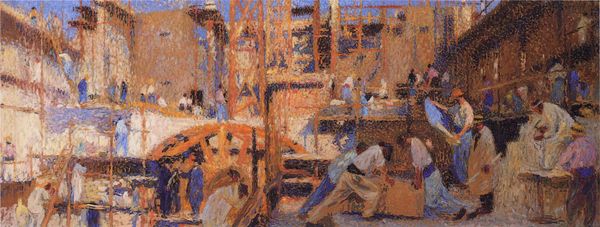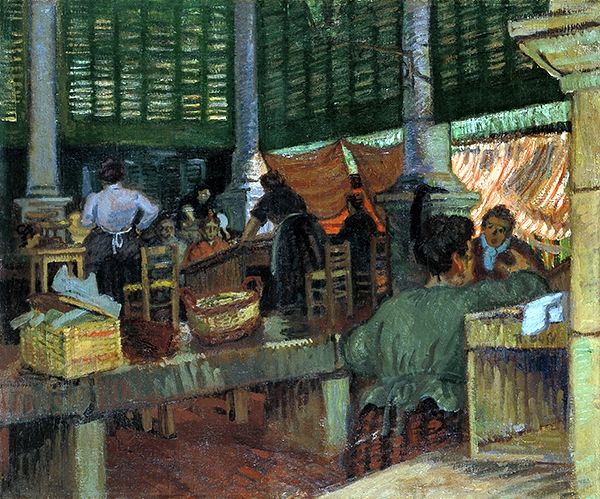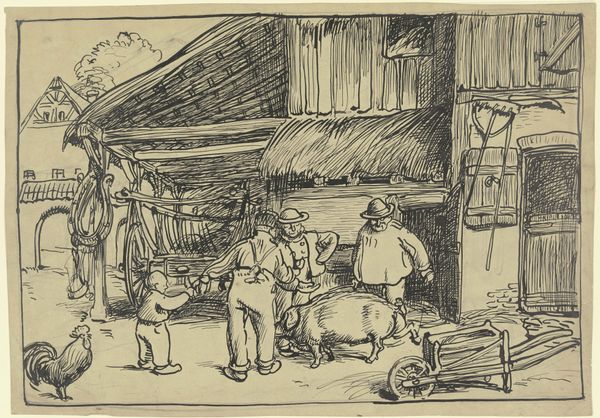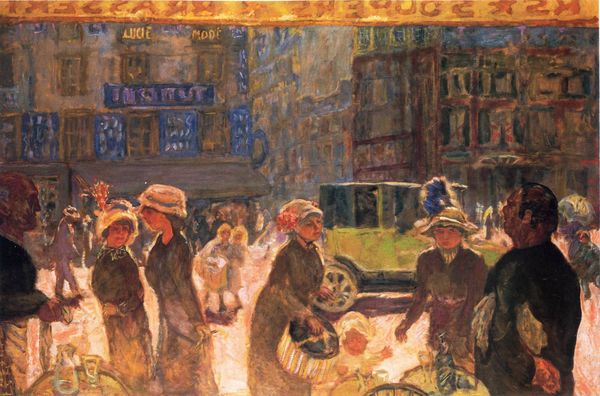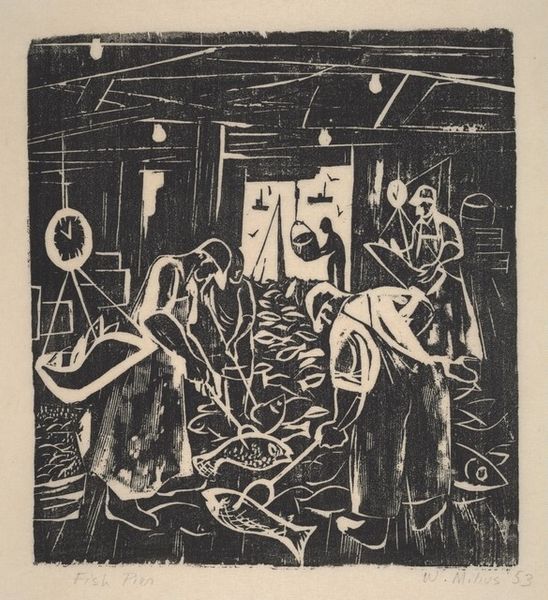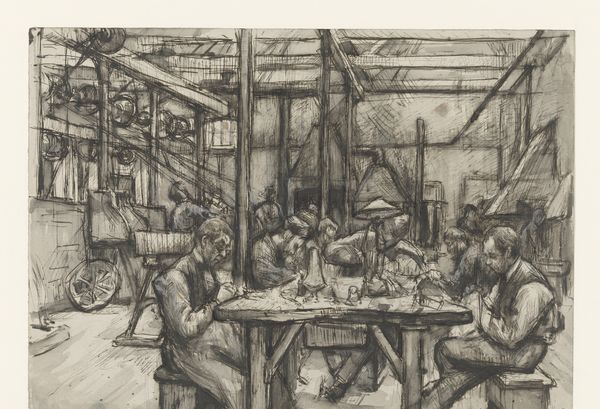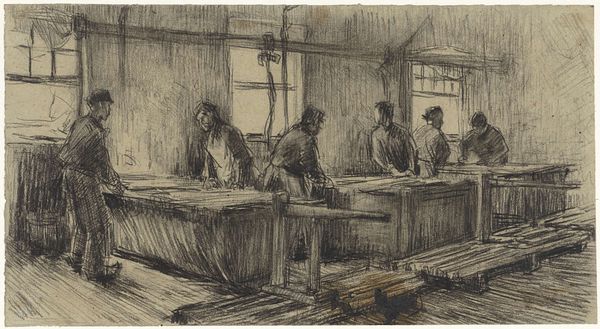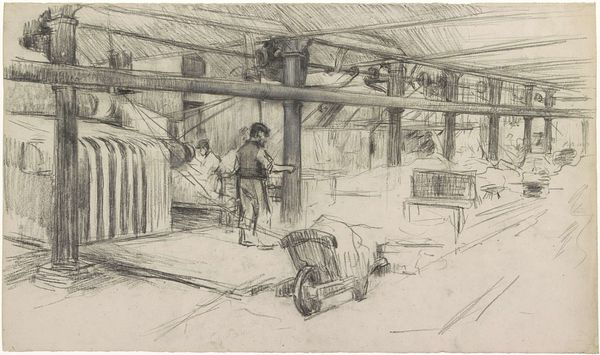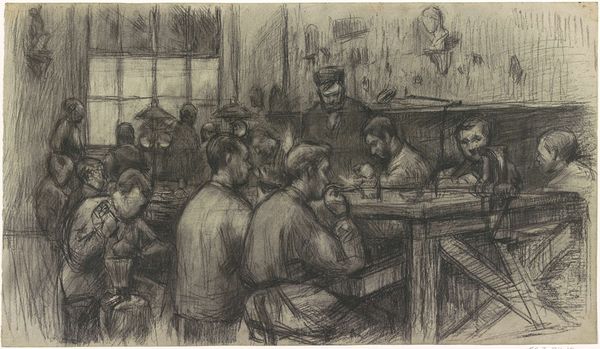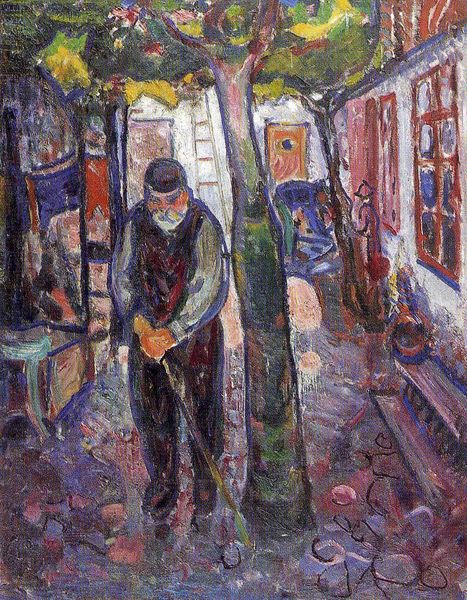
Ward in the Hospital at Arles 1889
0:00
0:00
vincentvangogh
Oskar Reinhart Foundation, Winterthur, Switzerland
painting, oil-paint, impasto
#
portrait
#
painting
#
impressionism
#
impressionist painting style
#
oil-paint
#
impasto
#
genre-painting
#
post-impressionism
#
modernism
Dimensions: 92 x 74 cm
Copyright: Public domain
Curator: Today we’re looking at Vincent van Gogh’s "Ward in the Hospital at Arles," painted in 1889. It offers us a glimpse into the artist's own experiences during his stay at a mental institution. Editor: The overriding impression is certainly one of confinement. The elongated perspective draws you in, but the aggressive brushstrokes and sickly green palette are incredibly unsettling. Curator: It’s fascinating how Van Gogh translated his experience into visual language. The painting is not simply a representation of a ward, but also, perhaps, the visual manifestation of the collective mood, and how social structures confine even the sick and vulnerable. Editor: Notice the rhythmic, almost vibrating brushstrokes throughout. They deny any sense of stillness, and give dynamism to every object and surface—floor, wall, the patients themselves seem charged with an internal energy which has difficulty being contained. The color harmonies, those virulent greens and yellows, verge on discordant, almost hallucinatory. Curator: Van Gogh’s admission to the asylum in Arles was prompted by mental distress. His choice to paint his surroundings could be interpreted as an act of self-preservation or reflection, maybe even of rebellion against social conventions which force some individuals to remain excluded and apart. Consider what it meant, socially and psychologically, to be institutionalized in the late 19th century. Editor: I agree. The way he builds up layers of impasto in an almost sculptural manner creates a palpable sense of texture that begs for a tactile response. And although each patient appears resigned, each of them have individual detail, implying internal fortitude. They are still, yet have substance, Curator: Exactly. This wasn't merely an exercise in documenting his surroundings; this painting also challenges our own perception, inviting the viewer to consider how illness is perceived and dealt with. Editor: Absolutely. For all its initial apparent chaos of brushwork, a rigorous structural framework holds everything together. It shows us the depth and detail that defines Van Gogh as a masterful painter, regardless of setting. Curator: "Ward in the Hospital at Arles" leaves us reflecting not only on Van Gogh's state of mind but also the larger societal context of institutional care and the plight of the ill and marginalized. Editor: And, for me, it's the emotional immediacy, rendered by those brushstrokes and colors, that endures long after any social commentary.
Comments
No comments
Be the first to comment and join the conversation on the ultimate creative platform.
